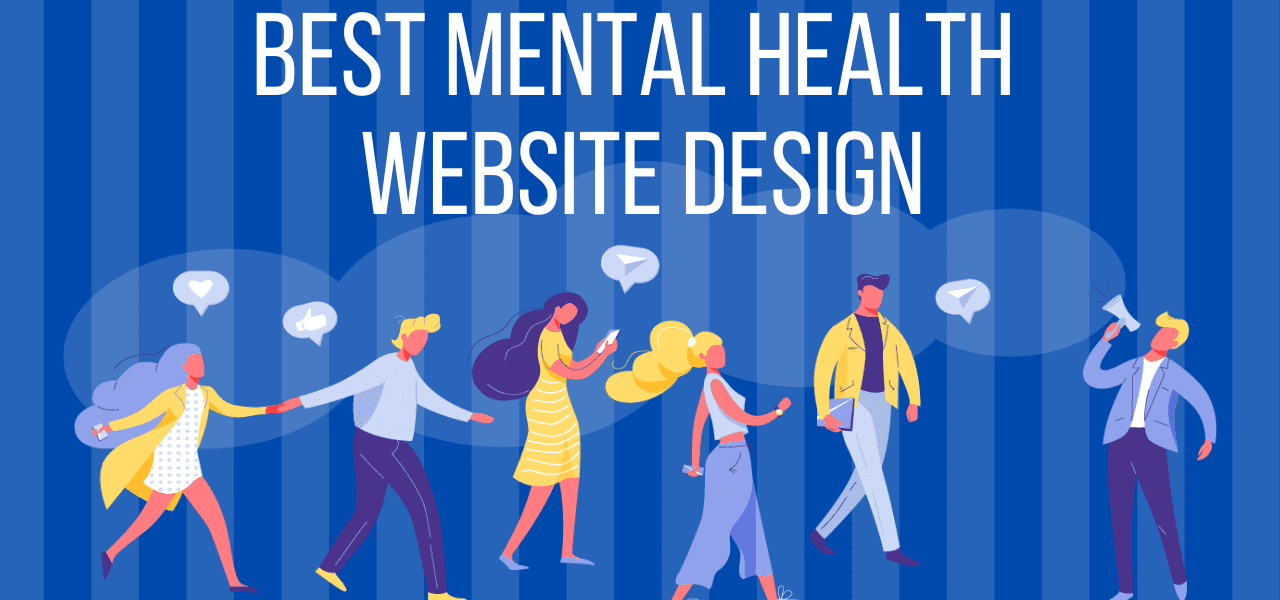In today’s digital age, having a robust online presence is essential for any mental health professional. An effective mental health website design can significantly impact the way clients perceive your practice and engage with your services. This article will explore key aspects of website design for mental health professionals, including psychiatrist website design.
Importance of Mental Health Website Design
The primary purpose of mental health website design is to create a welcoming and informative online space that reflects the professionalism and compassion of your practice. A well-designed website can help establish trust, provide valuable resources, and facilitate the first step toward seeking help.
For mental health professionals, the website is often the first point of contact for potential clients. Therefore, it must convey a sense of safety, confidentiality, and expertise. An effective design can also improve client retention and enhance your practice’s overall reputation.
Key Elements of Website Design for Mental Health ProfessionalsUser-Friendly Navigation
User-friendly navigation is crucial for any website, but it is particularly important for mental health websites. Visitors should be able to easily find information about your services, qualifications, and contact details. A clear and intuitive menu structure can help achieve this, ensuring that potential clients can quickly access the information they need.
Professional and Compassionate Design
The design of your website should reflect both professionalism and compassion. Use calming colors, soothing images, and a clean layout to create a sense of peace and reassurance. Avoid overly clinical or sterile designs that might feel impersonal or intimidating. Instead, aim for a balance that conveys your expertise while also showing empathy and understanding.
Clear and Concise Content
The content on your website should be clear, concise, and easy to understand. Avoid jargon and use language that is accessible to a broad audience. Ensure that your content addresses common questions and concerns that potential clients might have, such as the types of therapy you offer, your approach to treatment, and what clients can expect during their first visit.
Psychotherapy Website Design
Highlighting Services and Specializations
For psychotherapy website design, it is essential to highlight your services and specializations. Whether you focus on cognitive-behavioral therapy, couples counseling, or child and adolescent therapy, make sure this information is prominently displayed. Providing detailed descriptions of each service can help potential clients understand what you offer and how it can benefit them.
Client Testimonials and Success Stories
Including client testimonials and success stories can be a powerful way to build credibility and trust. Real-life experiences from past clients can provide reassurance to those considering therapy. Ensure that you have permission to use these testimonials and maintain confidentiality by anonymizing details if necessary.
Online Booking and Contact Forms
To streamline the process of scheduling appointments, consider integrating online booking and contact forms into your psychotherapy website design. This feature can make it easier for clients to reach out and schedule sessions, reducing barriers to accessing care. Ensure that these forms are secure and comply with privacy regulations to protect client information.
Psychiatrist Website Design
Emphasizing Credentials and Experience
For psychiatrist’s website design, it is important to emphasize your credentials and experience. Potential clients want to know that they are in capable hands, so make sure your qualifications, certifications, and professional affiliations are prominently displayed. Including a professional biography and a photo can also help humanize your profile and build rapport with visitors.
Information on Treatment Approaches
Psychiatry often involves a combination of medication management and therapy. Provide clear information about your treatment approaches, including the types of conditions you treat and the therapies you offer. This transparency can help potential clients understand what to expect and how your services can address their specific needs.
Patient Resources and Education
Offering patient resources and educational materials can enhance the value of your psychiatrist website design. This might include articles on mental health topics, FAQs, and links to reputable external resources. Providing this information can empower clients to make informed decisions about their care and demonstrate your commitment to their well-being.
Best Practices for Mental Health Website Design
Mobile-Friendly Design
With the increasing use of smartphones and tablets, your website must be mobile-friendly. A responsive design ensures that your site looks and functions well on all devices, providing a seamless user experience for all visitors.
Search Engine Optimization (SEO)
To attract more visitors to your website, implement SEO best practices. Use relevant keywords, such as mental health website design, website design for mental health professionals, psychotherapy website design, and psychiatrist website design, throughout your content. This can improve your site’s visibility on search engines and help potential clients find you more easily.
Regular Updates and Maintenance
Keep your website up to date with the latest information about your services, office hours, and contact details. Regularly updating your content can improve your site’s performance and ensure that visitors always have access to accurate information.
Conclusion
In conclusion, an effective mental health website design is a vital tool for mental health professionals. Whether you are focusing on psychotherapy website design or psychiatrist website design, the key elements include user-friendly navigation, professional and compassionate design, clear content, and the integration of client testimonials and online booking systems. By following these best practices, you can create a website that not only attracts potential clients but also provides them with the information and reassurance they need to take the first step toward seeking help.





